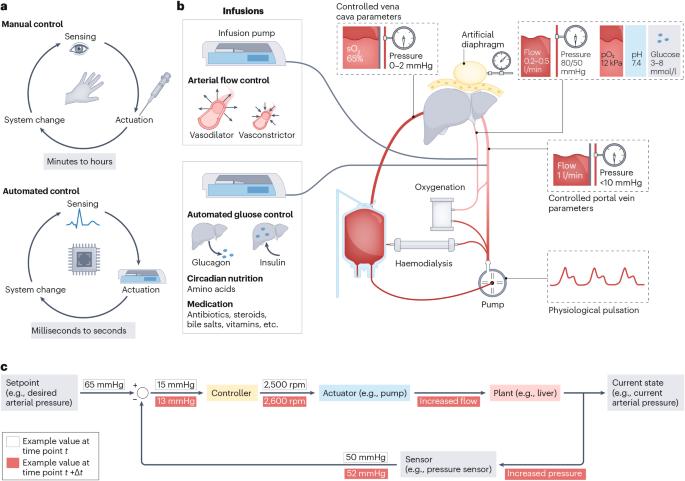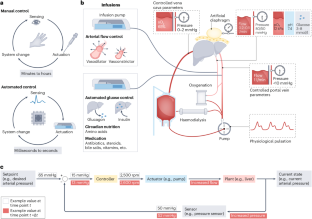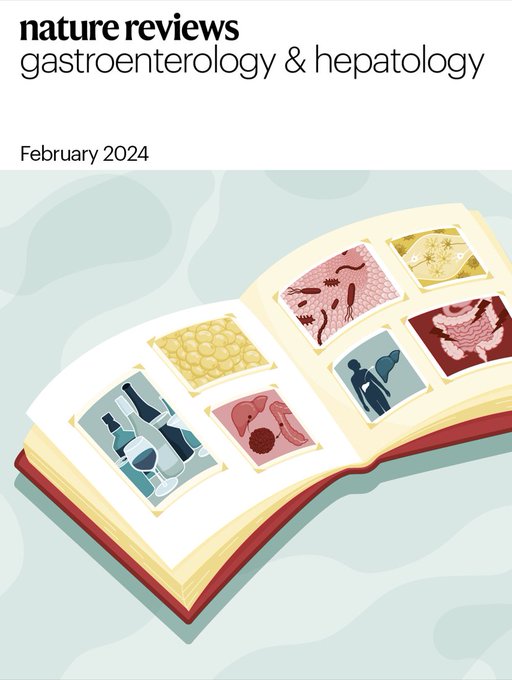Beyond preservation: future machine perfusion for liver assessment and repair
IF 51
1区 医学
Q1 GASTROENTEROLOGY & HEPATOLOGY
引用次数: 0
Abstract
Machine perfusion is an emerging and transformative technology for dynamic organ preservation, assessment and repair. Whereas allografts continuously degrade during static cold storage, short-term perfusion can preserve high-quality organs for hours, enabling assessment, regional transport and improved logistics. Long-term perfusion for multiple days might extend the potential of clinical machine perfusion in the future, allowing for the assessment, reconditioning and repair of marginal or injured grafts for which more time is needed. In addition, it might convert transplantation, which is now semi-elective thanks to short-term perfusion, to a fully elective procedure via customized machines and associated protocols that maintain organs ex situ for up to 2 weeks. The advent of long-term organ perfusion provides tremendous potential to improve organ evaluation and selection, to recondition or repair marginal grafts and, ultimately, to expand the pool of grafts available for transplantation. In this Perspective, we discuss design considerations, guidelines for use, and future perspectives of machine perfusion in the context of organ assessment and repair, with a focus on the liver. In this Perspective article, Huwyler, Binz and colleagues discuss the future of long-term normothermic machine perfusion for livers and propose a staged assessment approach for ex situ perfused organs.


超越保存:未来机器灌注用于肝脏评估和修复
机器灌注是一种新兴的、变革性的动态器官保存、评估和修复技术。同种异体移植物在静态冷藏过程中不断降解,而短期灌注可以将高质量器官保存数小时,从而使评估、区域运输和改善物流成为可能。多天的长期灌注可能会延长未来临床机器灌注的潜力,从而可以评估、修复和修复边缘或受伤的移植物,而这需要更多的时间。此外,它还可以通过定制的机器和相关的方案将器官移位维持长达2周的时间,将移植从目前的短期灌注半选择性转变为完全选择性。长期器官灌注的出现为改善器官评估和选择,修复或修复边缘移植物,并最终扩大可用于移植的移植物池提供了巨大的潜力。在这一观点中,我们讨论了在器官评估和修复的背景下机器灌注的设计考虑,使用指南和未来的前景,重点是肝脏。
本文章由计算机程序翻译,如有差异,请以英文原文为准。
求助全文
约1分钟内获得全文
求助全文
来源期刊
CiteScore
52.30
自引率
0.60%
发文量
147
审稿时长
6-12 weeks
期刊介绍:
Nature Reviews Gastroenterology & Hepatology aims to serve as the leading resource for Reviews and commentaries within the scientific and medical communities it caters to. The journal strives to maintain authority, accessibility, and clarity in its published articles, which are complemented by easily understandable figures, tables, and other display items. Dedicated to providing exceptional service to authors, referees, and readers, the editorial team works diligently to maximize the usefulness and impact of each publication.
The journal encompasses a wide range of content types, including Research Highlights, News & Views, Comments, Reviews, Perspectives, and Consensus Statements, all pertinent to gastroenterologists and hepatologists. With its broad scope, Nature Reviews Gastroenterology & Hepatology ensures that its articles reach a diverse audience, aiming for the widest possible dissemination of valuable information.
Nature Reviews Gastroenterology & Hepatology is part of the Nature Reviews portfolio of journals.

 求助内容:
求助内容: 应助结果提醒方式:
应助结果提醒方式:


